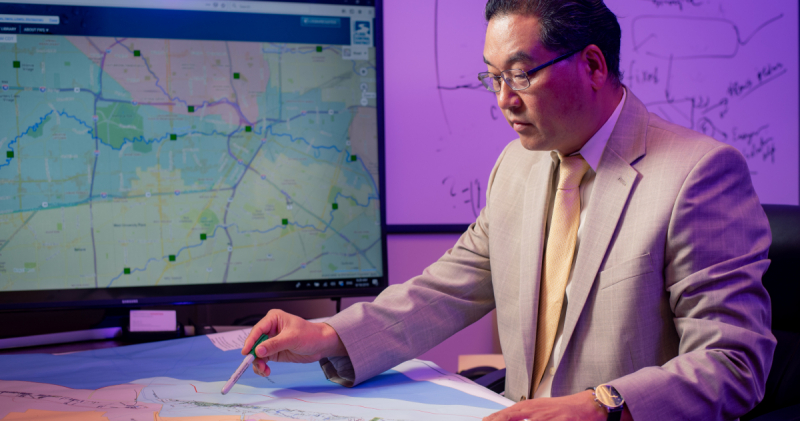Houston knows how deadly hurricanes can be, but evacuating large amounts of people from the city can also be extremely dangerous. A Cullen College of Engineering professor is looking to mathematical models for solutions to safer and more efficient evacuations.
If you have ever needed to evacuate Houston during a hurricane event, you know how congested the roadways are. Gino Lim, the R. Larry and Gerlene (Gerri) R. Snider Endowed Chairman of Industrial Engineering, spent a grueling 14 hours in a car trying to outpace Hurricane Rita. He says he still remembers the ordeal of trying to leave Houston for San Antonio.
“During the evacuation, I realized that there should be a better solution to evacuating people from such a large metropolitan city,” he said. “When I returned from San Antonio, I immediately started reading literature on evacuation.” he said.
The reading provided him with an idea.
“I thought the evacuation process was very similar to a network flow model I teach my students in transportation, supply chain, and oil and gas pipelines. So, I started working on developing some mathematical models,” said Lim. Then, he published several papers to recommend zone-based evacuation planning and management in the case of hurricanes.
Lim is the first to admit that he was not an expert in evacuation planning, at first. What he is an expert in – and what he is trained to do – is taking real life problems, converting them into a mathematical model and then solving for optimal solutions.
Evacuation events are highly complex because they involve human behavior and unforeseen circumstances. The equations Lim created were highly sophisticated and sometimes required high-performance computers to work out the numbers – Lim used both the UH HPE Data Science Institute’s computer clusters and his own server network.
Many entities, like the Texas Department of Transportation, may find Lim’s research helpful in the planning of evacuation routes for upcoming weather events. Lim would be open to helping governmental agencies in their difficult undertaking of improving evacuation routes out of the city because, as he says: “I want to minimize the casualties and maximize the benefits in any problem I approach,” said Lim.
